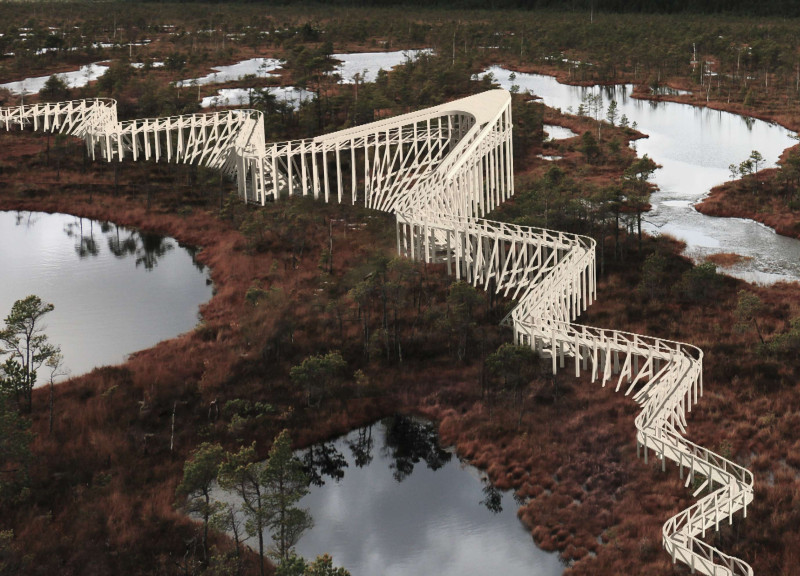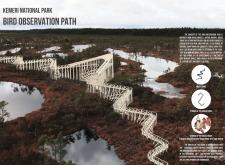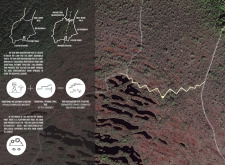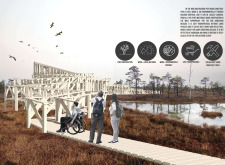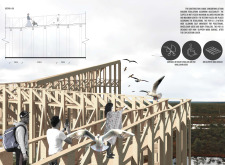5 key facts about this project
**Overview**
The Bird Observation Path is located within Kemeri National Park in Latvia, designed to enhance visitor interaction with the natural environment while prioritizing ecological integrity. The concept draws inspiration from the Latvian grass snake (*Natrix natrix*), a figure rooted in local mythology associated with purity and wisdom. This influence manifests in the path's innovative zig-zag configuration, which encourages exploration and offers varied perspectives as visitors navigate the landscape.
**Pathway and Accessibility Design**
The pathway features a structurally distinct boardwalk that merges traditional and contemporary design elements. The zig-zagging routes and intentional elevation changes facilitate immersive views of local birdlife and other natural landscapes. A central platform, elevated seven meters, provides a broad vantage point for observing environmental phenomena, including sunrises and sunsets.
Accessibility is a critical consideration in the project, adhering to relevant Latvian regulations. The path is designed with 1.5-meter-wide pathways suitable for pedestrians, wheelchair users, and parents with strollers. Non-slip surfaces ensure safety, while gradual slopes enhance mobility for a diverse array of visitors, promoting inclusivity in engagement with the park's ecology.
**Material Selection and Environmental Context**
Wood, specifically locally sourced pine, serves as the primary material for the Bird Observation Path. This choice supports sustainability goals and is particularly effective in the park's moist bog environment. The lightweight nature of wood allows for easier transport without heavy machinery, and its recyclability contributes to environmental stewardship. The structural framework incorporates a lattice design, providing both strength and effective water drainage, thereby minimizing ecological disruption.
The Bird Observation Path exemplifies responsible architecture that merges functional design with cultural heritage, fostering a deeper appreciation for biodiversity and local traditions among visitors.


